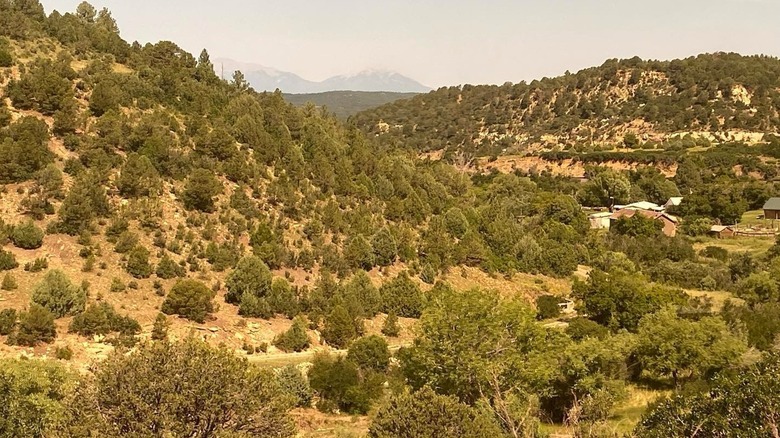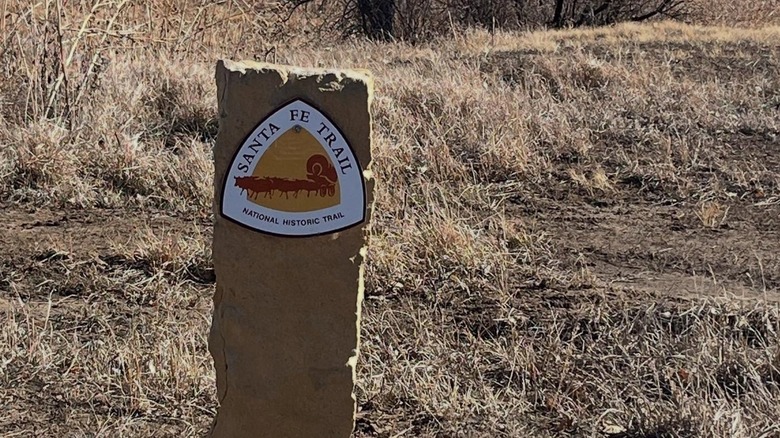An Abandoned Adobe Village In Colorado Tells Bold Frontier Tales Of Traders, Trails, And Tenacity
On the southeast edge of Colorado is a small but significant frontier site complete with two authentic territorial-style adobe houses. The word 'adobe' is Spanish for 'mud-brick', and adobe buildings are structures built out of organic materials, which were traditionally built by Indigenous people in areas that don't have a lot of trees.
Originally a Native American encampment and lauded as the birthplace of Colorado ranching, Boggsville was the first non-military Anglo settlement in the region. Established in 1866, this village was named after its first residents, Thomas and Rumelda Boggs. In 1870, Boggsville became Bent County's first-ever county seat. This historic district has been on the National Register for Historic Places since 1986 and it's on the famous Santa Fe Trail and historic byway. You can visit as part of an epic, 188-mile multi-state drive that takes you through stunning landscapes and past sites that are gleaming with American history. Just make sure you're aware of this unsafe trend, as it could put a dampener on any Colorado road trip.
If you don't fancy an extended drive, get the Chicago to Los Angeles Amtrak in charming La Junta, one of Colorado's best-kept secrets. The nearest airport is in Colorado Springs, about two and a half hours away. The closest towns to Boggsville are Las Animas and La Junta, which have a range of motels and places to eat. There are also campsites at Boggsville if you're coming by RV or with your tent.
Boggsville: A story of traders and tenacity
It's hard to imagine today, but what is now just two houses used to be a thriving trading center during the mid-1800s. Various traders coming up the Santa Fe trail would exchange goods here, and a variety of businesses sprang up in town. Boggsville had its own school, a trading post, a blacksmith's shop, and a general store. At its height, around 200 people lived there.
Alongside its significance in frontier history, Boggsville is an important example of an early multi-cultural village where people from diverse backgrounds coexisted peacefully. Women played a key role in the town's history, because it was they, and not their husbands, who owned the land. The male settlers may have done very well with their sheep and cattle enterprises, but their success was due to their wives' assets and position in society.
Tom Boggs obtained the land that became Boggsville through his wife, Rumelda Luna, because her great-uncle, an influential Mexican businessman, owned many acres in Colorado. Other early settlers of Boggsville included John Prowers and Amache Ochinee, an America/Cheyenne couple. Amache had received 640 acres of land when her father, Chief Lone Bear, died. Like Boggs, Prowers used the land to build his cattle trade. Boggsville was also the last place that famous frontiersman Kit Carson ever lived. You can pay your respects to him at the Kit Carson Memorial Chapel, which is 8 miles away in Fort Lyon.
Exploring Boggsville's trails and tours
The town's success was short-lived — it only lasted 10 years. A new railway was built, and it didn't go through Boggsville. The nearby city of Las Animas was established, and people started doing their business there. The county seat soon moved as well, and by the 1900s, Boggsville was mostly deserted, apart from the odd cow or ranch worker.
Boggsville is open from 11 a.m. to 4 p.m. Tuesday through Saturday. Upon arrival, you can take a short self-guided walking tour around the grounds, where you will find several informational plaques that signpost significant landmarks, including where Kit Carson's house used to be. Guided tours may also be available. You can learn more about the rich history of this region by visiting the John W. Rawlings Heritage Center and Museum, which is just a 4-minute drive away in Las Animas.
For a deeper immersion into the history and landscape of southeast Colorado, you can incorporate Boggsville into a longer drive with hiking stops from Lamar to La Junta. This route will take you past scenic lakes, through reservoirs, and historic towns, where you can spot colourful birds and soak up the lush sights and smells of nature. While you're in the state, don't miss these ultimate destinations to visit on a trip to Colorado.


